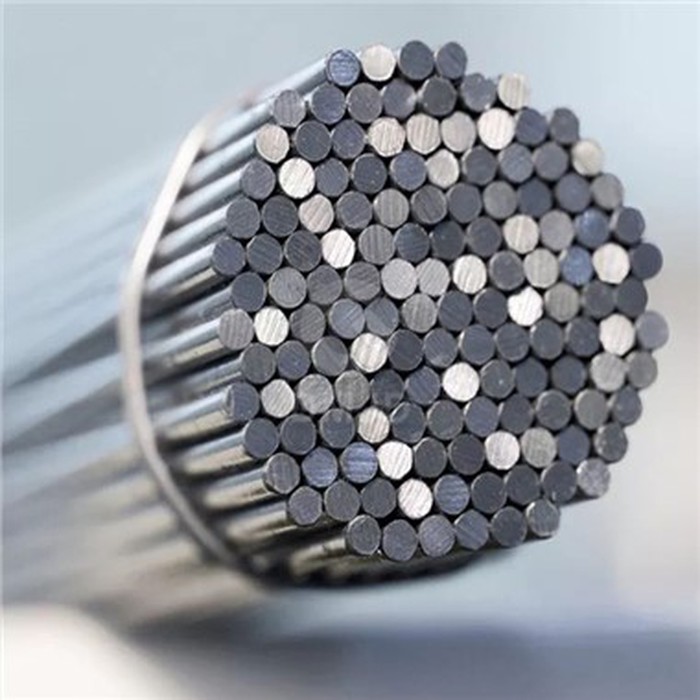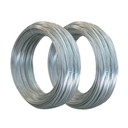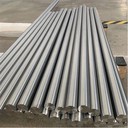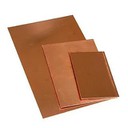Contact Us
- Xinwu District, Wuxi City, Jiangsu Province
- info@szdepu-metals.com
- +86 134 24179016
Stainless Steel Bar
Why Choose Us stainless steel?
One stop solution
Our customer team is highly skilled, motivated and always ready. No matter if you are following up on an order, looking for advice or looking for a bespoke quotation, our team is here to help.
Custom service
With our manufacturing and design capability, it allows us to not only offer standard products, but also products based on customers’ own specific designs.
High quality
As evidence of this quality, we’ve been awarded third-party accreditations including ISO 9001-2015 and EN-1090-2. These independently verify our technical expertise and confirm that we meet standards set by respected regulatory bodies.
Design
Our design engineers have more than 25 years of experience designing and building molds that offer innovative solutions to complex design challenges.
What is a Stainless Steel Bar?
A stainless steel bar is a solid metal rod made from a non-corrosive steel alloy that contains a higher percentage of chromium, which provides increased resistance to rust, corrosion, and staining. Stainless steel bars are available in various shapes and sizes, such as round, square, flat, and hexagonal bars, and can be used for various applications, including machinery parts, fittings, fasteners, and structures.
 304 Stainless Steel Square Bar
304 Stainless Steel Square Bar304 stainless steel is an austenitic stainless steel that contains high levels of chromium and
 431 Stainless Steel Round Bar
431 Stainless Steel Round BarDiameter: 1/16 (1.6mm) to 10 (254mm). .Length: Common lengths are 12 feet (3.66 meters) or 20 feet
 Stainless Steel Flat Bar Stock
Stainless Steel Flat Bar StockDiameter: 1/16 (1.6mm) to 10 (254mm). .Length: Common lengths are 12 feet (3.66 meters) or 20 feet
 M8 Stainless Steel Threaded Rod
M8 Stainless Steel Threaded RodDiameter: 1/16 (1.6mm) to 10 (254mm). .Length: Common lengths are 12 feet (3.66 meters) or 20 feet
 Polished Stainless Steel Flat Bar
Polished Stainless Steel Flat BarDiameter: 1/16 (1.6mm) to 10 (254mm). .Length: Common lengths are 12 feet (3.66 meters) or 20 feet
 4mm Stainless Steel Round Bar
4mm Stainless Steel Round BarDiameter: 1/16 (1.6mm) to 10 (254mm). .Length: Common lengths are 12 feet (3.66 meters) or 20 feet
 304 Stainless Steel Square Bar
304 Stainless Steel Square BarDiameter: 1/16 (1.6mm) to 10 (254mm). .Length: Common lengths are 12 feet (3.66 meters) or 20 feet
 Ss 304 Round Bar
Ss 304 Round BarDiameter: 1/16 (1.6mm) to 10 (254mm). .Length: Common lengths are 12 feet (3.66 meters) or 20 feet
 12mm Ss Rod
12mm Ss RodDiameter: 1/16 (1.6mm) to 10 (254mm). .Length: Common lengths are 12 feet (3.66 meters) or 20 feet
 Polished Stainless Steel Rod
Polished Stainless Steel RodDiameter: 1/16 (1.6mm) to 10 (254mm). .Length: Common lengths are 12 feet (3.66 meters) or 20 feet
 Duplex 2205 Round Bar
Duplex 2205 Round BarDiameter: 1/16 (1.6mm) to 10 (254mm). .Length: Common lengths are 12 feet (3.66 meters) or 20 feet
 Round Bar Stainless Steel 304
Round Bar Stainless Steel 304Diameter: 1/16 (1.6mm) to 10 (254mm). .Length: Common lengths are 12 feet (3.66 meters) or 20 feet
Benefits of Stainless Steel Bar
Corrosion resistance
The key benefit of stainless steel is that they provide great features of corrosion resistivity which helps to use in many applications. The corrosion rate of low alloy steel grades increases in hot conditions. It is also heat resistant and fire resistant when exposed to high temperatures and pressures.
Temperature resistance at both high and low levels
Heat and fire resistance aids in preventing scaling at extreme temperatures as well as maintaining power.
Manufacturing ease
Today’s modern steel manufacturing procedures allow stainless steel to be forged, cut, drilled, machined, manufactured and molded in much the same way as conventional steel. Frequently, it is the least expensive content option due to its long product life cycle and long useable lifetime.
Cleansing
Its ease of cleaning makes stainless steel a favorite material of hospitals, restaurants, and abattoirs that are subject to strict hygiene standards. Food that comes into contact with a stainless steel round bar will not accumulate dirt or bacteria, as it is one of the most sanitary and clean surfaces available.
Aesthetic appeal
Round stainless steel bars are available in a variety of surface treatments, and they are easily maintained and have an appealing appearance due to their durability and high quality. It is vital to have stainless steel appliances in the kitchen or house, and stainless steel curtains rods, which look fantastic in either setting.
Types of Stainless Steel Bar
Round bars
These are commonly used in construction, food processing, and general machining applications.
Square bars
These are used in structural and architectural applications.
Flat bars
Lorem ipsum dolor sit amet consectetur adipisicing elit.
Hex bars
These are used for construction, machining, and general fastening applications.
Threaded bars
These are used for construction, plumbing, and general fastening applications.
Angle bars
These are used in fabrication, construction, and agricultural applications.
Channel bars
These are used for structural and architectural applications.
Hollow bars
These are used for machining and structural applications where weight reduction is desired.
Austenitic stainless steel round bars
Type 304/304L: This is one of the most common stainless steel grades. It offers good corrosion resistance and is often used in applications such as food processing, chemical equipment, and architectural components.
Type 316/316L: Known for its superior corrosion resistance, it is commonly used in marine environments, pharmaceutical equipment, and applications where exposure to chlorides is a concern.
Ferritic stainless steel round bars
Type 430: This grade offers good corrosion resistance and is often used in applications like automotive trim, kitchen appliances, and architectural components.
Martensitic stainless steel round bars
Type 410: Known for its excellent wear resistance, it is often used in applications like cutting tools, valves, and mechanical parts.
Type 420: Offers good corrosion resistance and is used in applications such as surgical instruments and cutlery.
Duplex stainless steel round bars
Duplex 2205 (S32205): These round bars have a combination of good corrosion resistance and high strength. They are used in applications such as chemical processing, offshore oil and gas equipment, and heat exchangers.
Precipitation hardening (PH) stainless steel round bars
17-4 PH: Known for its high strength and corrosion resistance, it is used in applications like aerospace components and power generation equipment.
High temperature stainless steel round bars
310: These round bars can withstand high temperatures and are used in applications like furnace parts, heat treatment equipment, and exhaust systems.
Nitronic stainless steel round bars
Nitronic 60: Offers high strength, excellent corrosion resistance, and good wear resistance. It is used in applications such as pump components, valve stems, and marine hardware.
Special alloys and super stainless steel round bars
Alloy 20 (Carpenter 20): Known for its resistance to corrosion in sulfuric acid environments, it is used in chemical processing equipment.
Alloy 625 (Inconel 625): Offers excellent resistance to high-temperature corrosion and is used in aerospace and marine applications.
Alloy 825 (Incoloy 825): Known for its resistance to various corrosive environments, including sulfuric and phosphoric acids, and is used in chemical processing and oil and gas industries.
Application of Stainless Steel Bar
In the production of fastener products
Because of their fantastic corrosion resistance, SS round bars are used in manufacturing industries that produce fasteners products like Bolts, nuts, screws, washers, and rivets can range in size from micro to mega depending on the application and customs requirements, and machining and producing these fasteners for use in industrial or domestic environments.
Manufacture of tools
Stainless Steel Bar, a highly specialized product, are also used in the machining industry. These calcium-treated bars have free-machining grades, resulting in faster cutting speeds and longer tool life.


Manufacture of machine components
These specialty round bars, with precision, straightened and mirror-finish surfaces, are widely used in the manufacture of various machine parts.
Sector of engineering and constructio
Stainless steel round bars and flats are frequently used in building and engineering projects. Because the modular round bars products provide immediate stability and strength, the project can be completed quickly.
Stainless Steel Bar Craftsmanship
Melting and casting
To create stainless steel bars, manufacturers first melt metal scrap and other raw materials using an electric arc furnace or an induction furnace. The molten metal is then cast into a mold to form a rough shape known as an ingot.
Hot rolling
The ingot is then reheated to a temperature of 1,200 to 1,300 degrees Celsius and placed in a rolling mill. The rolling mill continuously rolls the ingot, reducing its thickness, and elongating it into the desired shape and size. The process also refines the ingot's chemical composition and structure, making the stainless steel bars stronger and more durable.
Peeling
After hot rolling, the surface of the stainless steel may have surface irregularities and impurities. The bars are then fed through a peeling machine, which removes the outer layer of the material to reveal a smooth surface suitable for downstream machining processes.
Cold drawing
Stainless steel bars that need to be highly accurate and have a uniform diameter undergo cold drawing. The stainless steel bars are pulled through a series of dies that gradually reduce the diameter of the bar. This process provides greater dimensional accuracy, uniformity, and surface smoothness.
Annealing
After cold drawing, the stainless steel bars are annealed to relieve stresses and improve its machinability. The bars are heated up to 1,100 degrees Celsius and then allowed to cool down slowly to room temperature. This process changes the internal structure of the stainless steel, making it easier to work with, bend, and deform.
Finishing
The final step to crafting stainless steel bars is the finishing process, that involves grinding, polishing, or coating the bars with a protective layer or plating.
How to maintain Stainless Steel Bar

01.Cleaning
02.Wipe dry
03.Polish
04.Avoid contact with corrosive substances
05.Store in dry place
06.Regular maintenance
Grade of stainless
It is crucial to understand the different grades of stainless steel bars available in the market. The grade of stainless steel determines its composition and properties. The two most commonly used grades are 304 and 316 stainless steel bars. While both offer excellent corrosion resistance, 316 stainless steel bars provide superior resistance to harsh environments containing chemicals or saltwater. Therefore, it is essential to choose the appropriate grade based on the specific requirements of your application.
Surface finish
Another important factor to consider is the surface finish of the stainless steel bar. The surface finish not only affects the aesthetics but also influences the bar's performance in certain applications. The most commonly used surface finishes include brushed, mirror, and mill finishes. Brushed finishes offer improved corrosion resistance and are frequently used in environments where cleanliness is crucial, such as in the food processing industry. On the other hand, mirror finishes provide a high level of reflectivity and are often used for decorative purposes.
Storage standards
Proper handling and storage are vital for maintaining the quality of stainless steel bars. These bars should be stored in a clean and dry environment to prevent contamination and corrosion. Any contact with carbon steel or other metals should be avoided, as it can result in galvanic corrosion. It is recommended to use dedicated storage racks or pallets to prevent any direct contact with the ground.
Cleaning and maintenance
Regular cleaning and maintenance are essential for stainless steel bars to retain their properties and appearance. Routine cleaning using mild soapy water and a non-abrasive cloth is usually sufficient. Avoid using harsh cleaning agents or abrasive materials that can damage the protective oxide layer on the surface of the bar. Additionally, inspect the bars regularly for any signs of corrosion or damage.
Use correctly
When using stainless steel bars in structural applications, it is crucial to consult engineering professionals to ensure proper design and installation. They can guide you in selecting the appropriate size, shape, and type of stainless steel bar to meet the specific load-bearing requirements. Following the recommended guidelines for welding and fastening techniques is also essential to maintain the integrity and strength of the structure.
Factors to Consider When Selecting Stainless Steel Bar?
Corrosion Resistance
One of the primary advantages of stainless steel is its resistance to corrosion. However, different grades of stainless steel offer varying levels of resistance to different types of corrosive environments. It is important to consider the specific type of corrosion that the stainless steel bar will be exposed to and select a grade that offers the appropriate level of resistance. Factors to consider include exposure to moisture, chemical substances, and oxidizing agents.
Mechanical Properties
The mechanical properties of stainless steel, such as tensile strength, yield strength, and hardness, play a crucial role in its performance in different applications. The intended use of the stainless steel bar will determine the required mechanical properties. For example, a stainless steel bar used for structural purposes may require higher strength and toughness compared to a bar used in a decorative application.
Temperature Resistance
Stainless steel exhibits good high-temperature resistance, but different grades have varying limits to their heat resistance. Consider the temperature range the stainless steel bar will be exposed to and ensure that the selected grade can withstand it without losing its mechanical or corrosion-resistant properties.
Fabrication and Machinability
The ease with which a stainless steel bar can be fabricated and machined is an essential factor to consider, especially if you require customized shapes or sizes. Some stainless steel grades are more easily machined than others, and they may also have better weldability or formability. Consider the specific fabrication or machining requirements of your project and select a stainless steel grade that can be readily processed in the desired manner.
Cost
Cost is always an important consideration when selecting any material. Stainless steel bars come in a wide range of grades and prices. The cost will vary depending on factors such as the grade, size, shape, and quantity required. It is essential to balance the performance needs of your application with the cost of the chosen stainless steel bar.
Surface Finish
The surface finish of stainless steel bar can vary widely, ranging from a bright polished finish to a matte or brushed finish. Different surface finishes have both aesthetic and functional implications. Consider the specific requirements of your application and select a surface finish that meets those requirements while also considering the desired appearance.
Our Factory
With a vast stock holding of stainless steel sheets, coils, strips, tubes, and bars, we have a wide range of products readily available to meet your immediate needs. Our comprehensive inventory ensures quick access to the materials you require.

Frequently Asked Questions Stainless Steel Bar
As one of the leading stainless steel bar manufacturers and suppliers in China, we warmly welcome you to buy or wholesale cheap stainless steel bar in stock here from our factory. All customized products are with high quality and competitive price. For free sample, contact us now.





